The first special edition DBS was the ‘Carbon Black’ of 2009. The latest cars are to the same specification, featuring hand-finished (a 25-hour process of flatting and polishing) seven-layer paintwork complemented by 10-spoke, gloss black diamond-turned wheels. Reversed diamond-turning or full gloss black finishes on the wheels are options.
As far as the ‘Carbon’ bit is concerned, the superstrong, light and visually attractive material features large on this special edition. Side-mirror covers, rear lamp in-fills, a special fascia, the Touchtronic II gearshift paddle tips and even a special edition sill plaque (with laser-etched metal inlay): all are in carbonfibre.
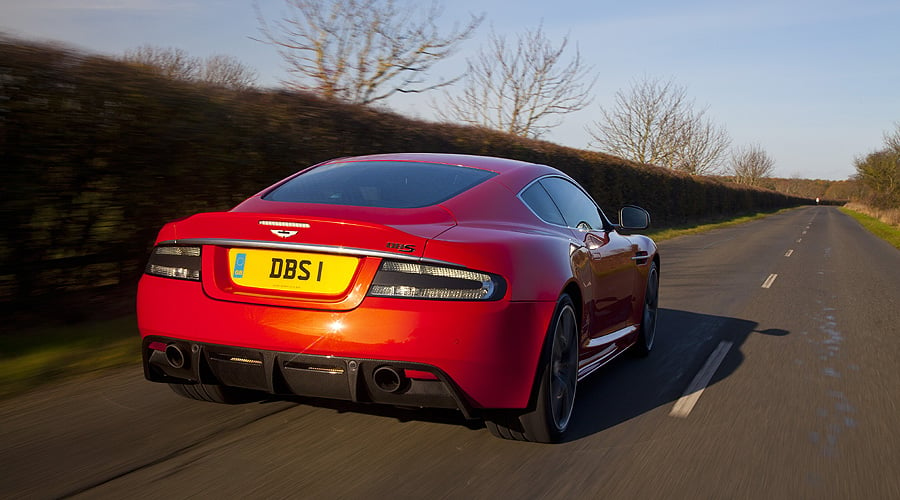
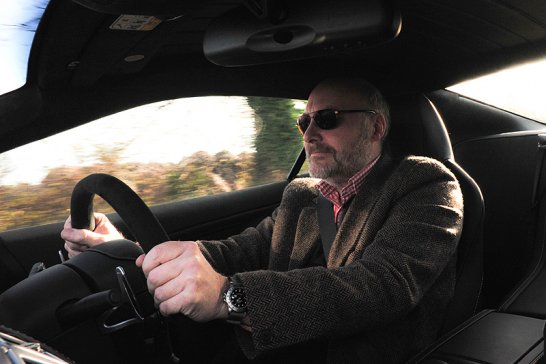
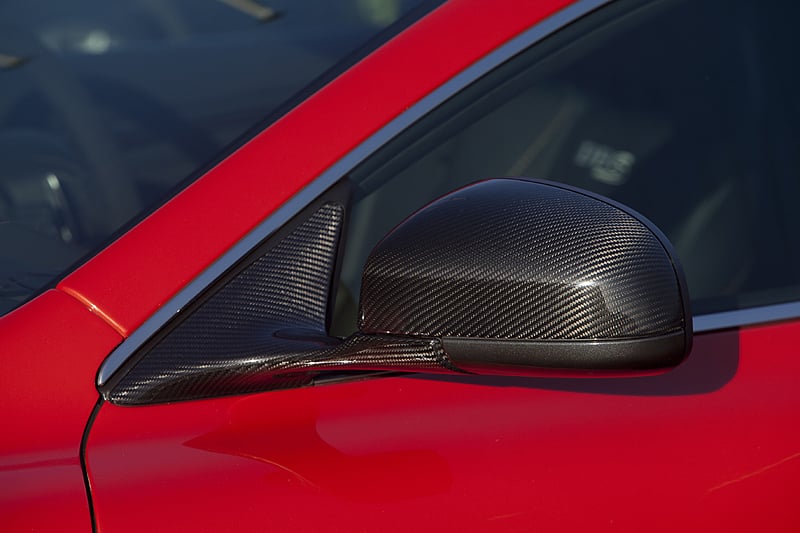
Inside the cabin, hand-stitched semi-aniline leather – softer and more natural to the touch – comes as standard in two colour options: Obsidian Black and Madagascar Orange. And the headlining is now in quilted leather, rather than the regular car’s Alcantara.
Finally, in addition to the Garmin navigation system Aston has fitted ‘beam blade’ (a solid piece of rubber, to you and me, with no metal framework) wipers first seen in the Virage.
Clearly, these additional features not only make financial sense (as a package, it’s a saving over options-box ticking), they also result in a sensational-looking GT. I had a short drive in a Flame Orange/Obsidian Black example (the other new colour is Ceramic Grey), both to reacquaint myself with the 510bhp coupé and experience a little of that ‘Carbon Edition’ magic.
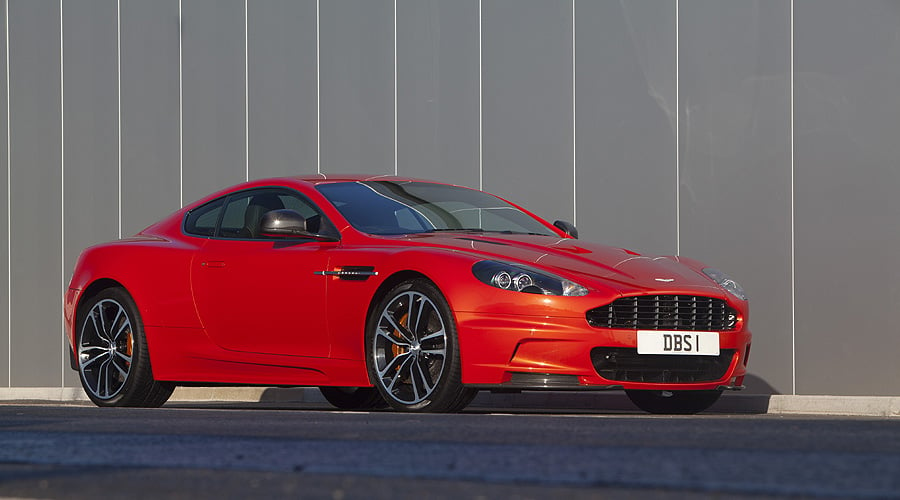

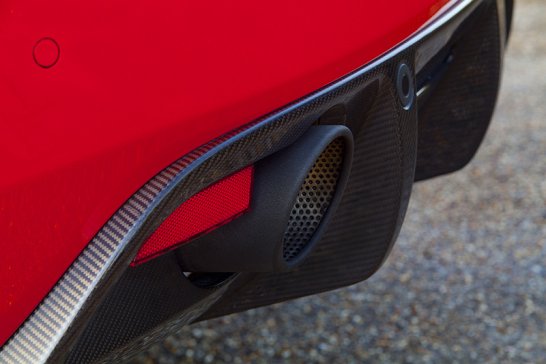
The immediate impression one receives on closing the elegant ‘swan door’ of any Gaydon-era Aston is one of solidity. Likewise when you start the engine and click the car into Drive. It moves away from standstill with purpose and heft. The Alcantara-covered steering wheel is warm to the touch and connects well with the massive 8.5J x 20in front tyres, while at low revs the engine provides easy, loping performance.
Stretch its legs a little, by exploring the upper reaches of the tachometer, and the performance pours on. It’s not neck-snapping; more of an irresistible force that draws the horizon ever-closer. The CCM brakes bring the big car up nicely, and the firmish ride suits the performance-orientated nature of the car while soaking up the worst of British road surfaces.
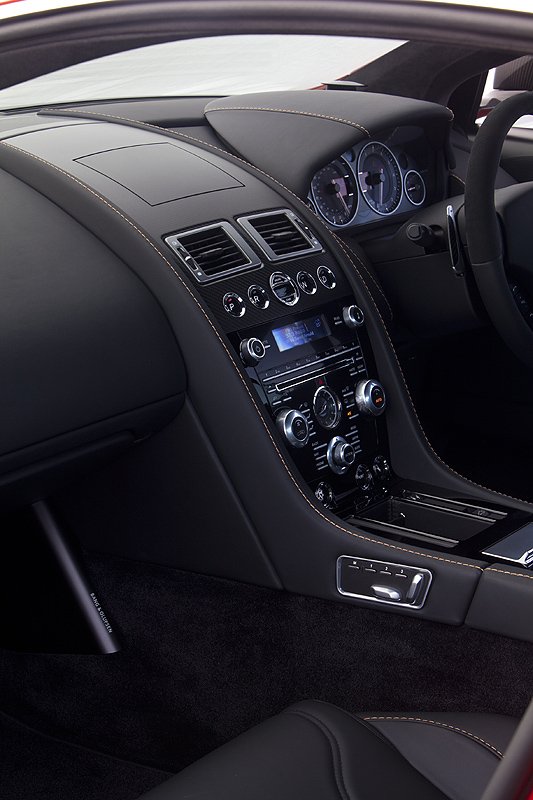
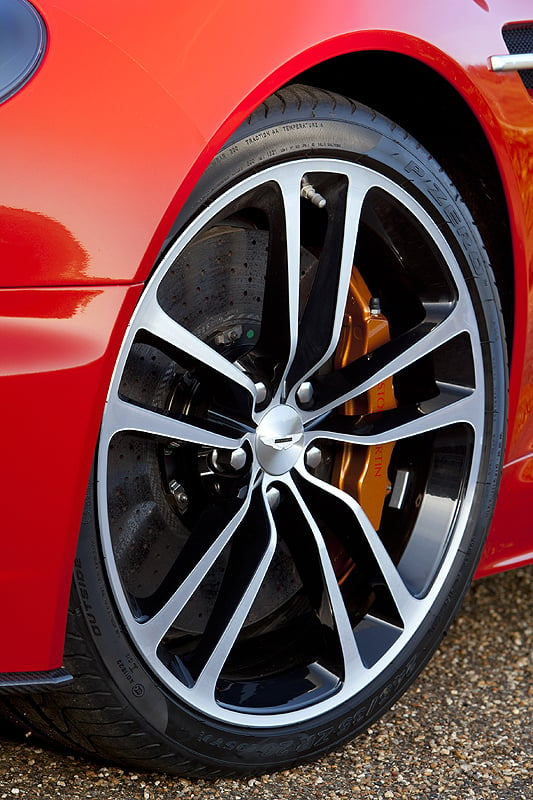
The interior cossets, and the carbonfibre treatment of the central fascia is classily executed. I’d spent the morning with Chris Porritt researching our feature on the One-77. Carbonfibre and other composites are increasingly used nowadays at Gaydon and, even where used solely as decoration, the skill is in making it look just right. By hand-laying the weave, Aston’s craftsmen ensure that the direction of the fibres exactly matches that of the form of the dashboard. It’s expensive-looking, no question.
Aston Martin has always been about providing the perfect long-distance GT. Let’s be honest, performance-wise and despite its war paint, the DBS is never going to challenge a 2010-level mid-engined supercar with horsepower in the high 580s. Or new-generation, direct-injection V12s with nearly another 100bhp on top of that figure.
No, it’s all about presence, style and more than adequate performance on long trips for two. The DBS still delivers those qualities – and more. The Carbon Edition is an extra plus for those looking for the ultimate DBS with many features normally unobtainable, all for a package price that - were it possible to describe a £186,582 car as such - represents good value for money.
Photos: Aston Martin











